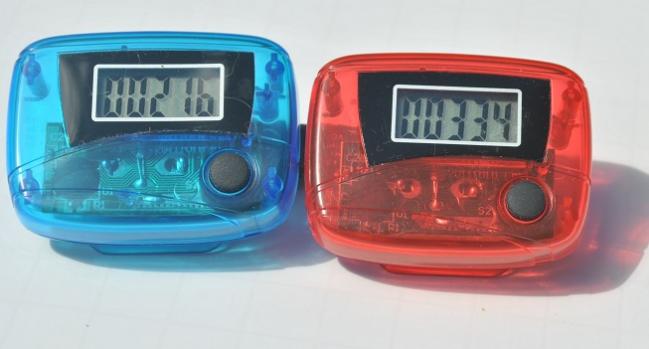In HF and Diabetes, Mobile Health App Modestly Boosts Physical Activity
People who used the app saw large improvements in quality of life, which investigators say was a win for the tech.

A mobile health intervention that sets personalized physical activity goals and sends multiple weekly reminders to get active can boost the number of daily steps taken by patients with heart failure (HF) and diabetes over a 3-month period, according to results from the TARGET-HF-DM trial.
While the improvement in activity was modest compared with usual care, the digital application did improve quality of life.
“What’s clinically meaningful is always a difficult thing to characterize,” said G. Michael Felker, MD (Duke Clinical Research Institute, Durham, NC), highlighting the roughly 10% difference in step count. “It was certainly associated with a very large change in patient-reported quality of life. Of course, in an unblinded intervention, there’s all sorts of reasons why that might happen—they might feel more engaged or feel good about doing something for their health. In one sense, if this was a drug, we would be saying this was a very large signal in terms of quality of life.”
Felker, who presented the results at the Heart Failure Society of America 2021 meeting in Denver, CO, said the benefits of exercise are well known—among the general population and by those with HF and diabetes—but sticking with an exercise program is the real challenge. “Anybody who’s ever joined a gym knows the impact of these [exercise] recommendations is often limited by declining adherence over time,” said Felker.
The purpose of their study was to determine if a mobile health intervention could increase physical activity and lead to changes in behavior, he said.
Pragmatic Trial
TARGET-HF-DM, conducted at six centers in the United States, was designed as a pragmatic trial with limited inclusion/exclusion criteria. Patients with symptomatic HF (regardless of ejection fraction) and diabetes were included if they weren’t already participating in a supervised exercise program, such as cardiac rehabilitation, and had no major noncardiac impairments to physical activity. A smartphone was required for participation.
The mobile intervention was relatively simple, with patients receiving feedback and incremental, personalized exercise goals based on the prior week’s activity (sent by text three times per week). Both groups—usual care and mobile intervention—received a step counter and a weekly text reminder to wear it. The active intervention was 3 months in duration followed by 3 months of additional data collection with the app turned off.
Of the 187 participants randomized in the trial, roughly one-third were women and nearly half were African American. The majority (80%) were in NYHA class II, and two-thirds had HF with reduced ejection fraction.
For the primary endpoint, the mean daily step count for patients in the intervention arm increased from 3,628 at baseline to 3,752 at 3 months. In contrast, the mean daily step count for patients in the usual-care arm declined from 3,055 at baseline to 2,920 steps at 3 months. The between-group difference was 313 steps per day, which was statistically significant. Quality of life at 3 months also was better in patients using the mobile health app, with a mean between-group difference in the Kansas City Cardiomyopathy Questionnaire (KCCQ) overall summary score of 5.5 points (P = 0.009).
“Just to remind people, a difference of 5 points is considered a clinically important difference,” said Felker.
In terms of persistence once the intervention was turned off, the mean daily step count in the intervention arm declined from 3,752 at 3 months to 3,679 at 6 months. In the usual-care group, the mean daily count declined from 2,920 steps at 3 months to 2,756 at 6 months. This between-group difference was 409 steps per day, not reaching statistical significance.
There were no changes in mean NT-proBNP levels or HbA1c levels, though metabolomic profiling did show a reduction in long-chain acylcarnitines (LCACs) with the mobile health intervention. These LCACs, said Felker, are associated with adverse and/or disordered metabolism in patients with heart failure and diabetes.
“We really saw this as an exploratory, hypothesis-generating analysis, but what was really interesting to us was that even though the difference in step count was fairly modest, the biological signals all went in the same direction we would have expected with improved metabolic dysregulation,” said Felker. “In patients with both heart failure and diabetes, disordered metabolism is potentially a key part of the pathophysiology.”
Michael O’Riordan is the Managing Editor for TCTMD. He completed his undergraduate degrees at Queen’s University in Kingston, ON, and…
Read Full BioSources
Felker GM. A mobile health intervention to increase physical activity in patients with heart failure and diabetes: the TARGET-HF-DM randomized controlled trial. Presented at: HFSA 2021. September 13, 2021. Denver, CO.
Disclosures
- The TARGET-HF-DM trial was funded by the American Heart Association.





Comments